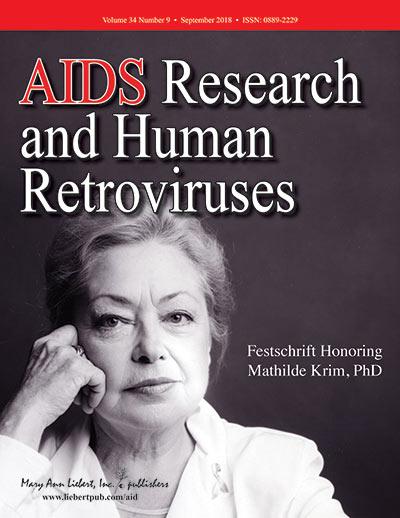Diagnosis of HIV-1 infection in the 4-year old child of an HIV-negative mother led to a forensic analysis to determine the source of the infection and try to date the transmission of the virus. The results of genetic, phylogenetic, and serologic data analysis on both the father and son and the hypothesis for how the boy became infected are published in a study in AIDS Research and Human Retroviruses, a peer-reviewed journal from Mary Ann Liebert, Inc., publishers.

The article entitled “Accidental Father-to-Son HIV-1 Transmission During the Seroconversion Period” was coauthored by Nuno Taveira, Universidade de Lisboa, Portugal and Instituto Superior Ciências Saúde Egas Moniz Monte de Caparica, Portugal, and researchers from these institutions and from Hospital Prof. Dr. Fernando Fonseca EPE, Amadora, Portugal and Los Alamos National Laboratory, Los Alamos, NM.
Based on comparative analysis of genetic, phylogenetic, and serologic data from the father and the son, the researchers concluded that the virus was accidentally transmitted to the son during the first days of the child’s life. During this time of seroconversion, the father was being treated for infection with varicella-zooster virus (chicken pox) and syphilis when he developed large vesicles all over his body that profusely leaked fluids. The high virus production early in HIV infection would have made the fluids leaking from the father’s skin blisters highly infectious. These infectious fluids could have come in contact with the newborn child causing this atypical HIV transmission event.
“Although this type of father-to-son HIV transmission event is rare, it is important that the general public realize that HIV is present in most bodily fluids and can be transmitted in atypical and unexpected ways,” says Thomas Hope, PhD, Editor-in-Chief of AIDS Research and Human Retroviruses and Professor of Cell and Molecular Biology at Northwestern University, Feinberg School of Medicine (Chicago, IL). “In this case, the circumstances of fluids leaking from skin blisters with the high amount of HIV present in the first months of HIV infection led to the unfortunate infection of a newborn child.”


Did the mother have syphilis?